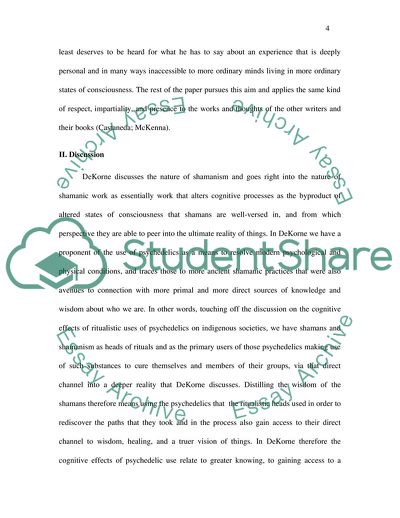Cite this document
(Ritualistic or Reverent Use of Psychedelics in Indigenous Societies: Thesis Example | Topics and Well Written Essays - 1750 words, n.d.)
Ritualistic or Reverent Use of Psychedelics in Indigenous Societies: Thesis Example | Topics and Well Written Essays - 1750 words. https://studentshare.org/psychology/1865364-ritualisticreverent-use-of-psychedelics-effect-on-cognition-in-indigenous-societies
Ritualistic or Reverent Use of Psychedelics in Indigenous Societies: Thesis Example | Topics and Well Written Essays - 1750 words. https://studentshare.org/psychology/1865364-ritualisticreverent-use-of-psychedelics-effect-on-cognition-in-indigenous-societies
(Ritualistic or Reverent Use of Psychedelics in Indigenous Societies: Thesis Example | Topics and Well Written Essays - 1750 Words)
Ritualistic or Reverent Use of Psychedelics in Indigenous Societies: Thesis Example | Topics and Well Written Essays - 1750 Words. https://studentshare.org/psychology/1865364-ritualisticreverent-use-of-psychedelics-effect-on-cognition-in-indigenous-societies.
Ritualistic or Reverent Use of Psychedelics in Indigenous Societies: Thesis Example | Topics and Well Written Essays - 1750 Words. https://studentshare.org/psychology/1865364-ritualisticreverent-use-of-psychedelics-effect-on-cognition-in-indigenous-societies.
“Ritualistic or Reverent Use of Psychedelics in Indigenous Societies: Thesis Example | Topics and Well Written Essays - 1750 Words”. https://studentshare.org/psychology/1865364-ritualisticreverent-use-of-psychedelics-effect-on-cognition-in-indigenous-societies.


